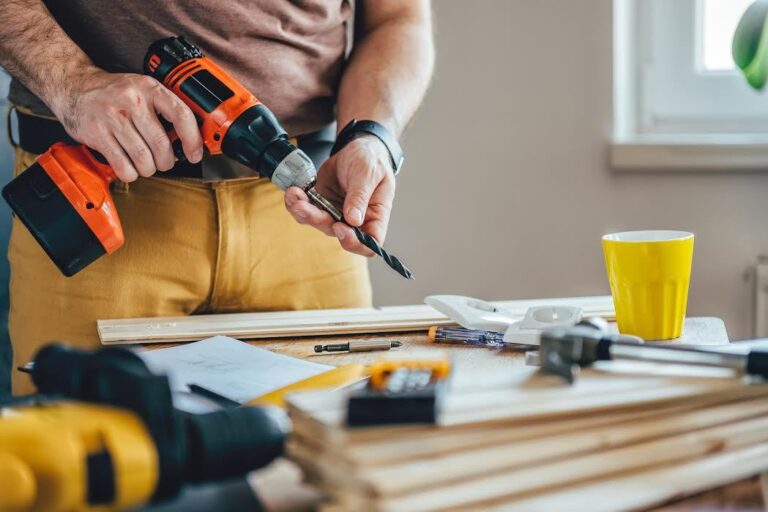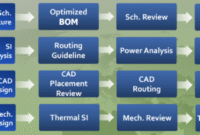From DIY Dream to Done Helping Shoppers Choose the Right Tools is a fascinating journey that transforms aspirations into reality. Whether you’re a seasoned DIY enthusiast or just starting to explore the world of home improvement, finding the right tools can make all the difference. This guide aims to equip shoppers with the insights and knowledge necessary to navigate the myriad options available, ensuring that every project can be tackled with confidence and the right equipment.
In an age where creativity meets craftsmanship, understanding the tools at your disposal is essential. From hammers to power drills, the right tool can elevate your project from a dream to a successful outcome. This guide dives into the essential aspects of choosing tools that suit various DIY needs, providing tips and tricks to simplify the decision-making process.
In today’s fast-paced world, the importance of effective communication cannot be overstated. Whether in our personal lives or professional settings, knowing how to convey our thoughts clearly and succinctly can lead to better relationships, increased productivity, and overall success. This article delves into various aspects of communication, providing insights and strategies to improve your skills.
### Understanding Communication
Communication is the process of exchanging information, ideas, thoughts, or feelings between individuals or groups. It can take many forms, including verbal, non-verbal, written, and visual. Understanding the different types of communication is essential to effectively convey messages and connect with others.
#### Verbal Communication
Verbal communication involves the use of words, either spoken or written, to express ideas. This can occur in face-to-face conversations, phone calls, or written formats such as emails and reports. The key to effective verbal communication lies in clarity and conciseness. Avoiding jargon, using simple language, and structuring your thoughts logically can significantly enhance understanding.
#### Non-Verbal Communication
Non-verbal communication encompasses body language, facial expressions, gestures, and even tone of voice. It often conveys more meaning than the words themselves. For instance, maintaining eye contact can show confidence and interest, while crossed arms may suggest defensiveness. Being aware of your own non-verbal signals and those of others can help you interpret messages accurately.
#### Written Communication
Written communication is an essential skill in the modern world. It includes emails, reports, social media posts, and more. The ability to write clearly and effectively is invaluable in both personal and professional contexts. Key elements of good written communication include proper grammar, a clear structure, and a friendly yet professional tone.
#### Visual Communication
Visual communication involves the use of visual aids to convey information. This can include graphs, charts, infographics, and videos. Visuals can enhance understanding and retention by breaking down complex information into digestible formats. A well-designed presentation can significantly impact how your message is received.
### The Importance of Active Listening
Effective communication is a two-way street, and being a good listener is just as important as being a good speaker. Active listening involves fully concentrating on what is being said, understanding the message, responding thoughtfully, and retaining the information. It shows respect for the speaker and fosters a positive communication environment.
#### Tips for Active Listening
1. Maintain Eye Contact: This shows the speaker that you are engaged and interested in what they are saying.
2. Provide Feedback: Nodding your head or using verbal affirmations like “I see” or “I understand” encourages the speaker to continue.
3. Avoid Interrupting: Allow the speaker to finish their thoughts before responding. This demonstrates respect and helps you fully understand their message.
4. Ask Questions: Clarifying questions can not only deepen your understanding but also show the speaker that you are invested in the conversation.
### Overcoming Barriers to Communication
Various barriers can hinder effective communication, such as language differences, cultural misunderstandings, emotional barriers, and even physical distractions. Recognizing these barriers is the first step in overcoming them.
#### Language Differences
In multicultural settings, language differences can lead to misunderstandings. It’s essential to be patient and open-minded, using simple language and avoiding idioms that may not translate well.
#### Cultural Differences
Cultural backgrounds influence how individuals communicate. Understanding these differences can improve interactions. For example, in some cultures, direct eye contact is a sign of confidence, while in others, it may be perceived as disrespectful. Being aware of these nuances can help you navigate conversations more effectively.
#### Emotional Barriers
Emotions can significantly impact communication. If someone is stressed, angry, or anxious, they may not communicate effectively. Being empathetic and understanding can help ease these emotional barriers, allowing for more open and honest dialogue.
#### Physical Distractions
In today’s digital age, distractions abound. Whether it’s notifications from your phone or background noise in a busy office, these distractions can hinder effective communication. Creating an environment conducive to conversation, free from interruptions, can enhance the communication experience.
### The Role of Empathy in Communication
Empathy is the ability to understand and share the feelings of another person. It plays a crucial role in effective communication, allowing individuals to connect on a deeper level. When you approach conversations with empathy, you foster trust and openness.
#### How to Cultivate Empathy
1. Practice Perspective-Taking: Try to see the situation from the other person’s point of view. This can help you understand their feelings and responses better.
2. Show Genuine Interest: Ask questions and listen actively to the answers. This shows that you care about the other person’s thoughts and feelings.
3. Be Mindful of Your Reactions: Your responses can impact how the other person feels. Strive to respond in a way that is supportive and understanding.
4. Acknowledge Feelings: Recognizing the emotions of others, even if you don’t agree, can validate their experiences and enhance communication.
### Strategies for Effective Communication
Now that we’ve explored the fundamentals of communication, let’s look at some practical strategies to enhance your communication skills further.
#### 1. Be Clear and Concise
When conveying a message, aim for clarity. Use straightforward language, and avoid unnecessary jargon. Structure your thoughts logically, and get to the point quickly to maintain the listener’s attention.
#### 2. Tailor Your Message to Your Audience
Understanding your audience is key to effective communication. Consider their interests, preferences, and level of knowledge about the topic. Tailoring your message can significantly increase its impact.
#### 3. Use Open-Ended Questions
Open-ended questions encourage discussion and provide more insight into the other person’s thoughts and feelings. Instead of asking, “Did you like the presentation?” try “What did you think about the presentation?” This invites a more engaging conversation.
#### 4. Practice Assertiveness
Being assertive means expressing your thoughts and feelings openly and honestly while respecting others. It’s a balance between being passive and aggressive. Practicing assertiveness can help you communicate your needs effectively without diminishing others.
#### 5. Seek Feedback
Feedback is essential for growth. After a conversation or presentation, ask for feedback from your audience. This can help you identify areas for improvement and refine your communication skills over time.
### Conclusion
Effective communication is a vital skill that can enhance your personal and professional life. By understanding the different forms of communication, practicing active listening, overcoming barriers, and cultivating empathy, you can significantly improve your communication abilities. Remember that communication is an ongoing process, and there’s always room for growth. By applying the strategies Artikeld in this article, you can become a more effective communicator and build stronger connections with those around you.
In conclusion, the journey from dream to done is paved with the right tools and knowledge. By understanding what you need and how to choose wisely, you’re setting yourself up for success in your DIY endeavors. Remember, every great project starts with the right foundations, and having the proper tools at your side will empower you to bring your visions to life.
Query Resolution: From DIY Dream To Done Helping Shoppers Choose The Right Tools
What are the essential tools every DIYer should have?
At a minimum, a DIYer should have a hammer, screwdriver set, measuring tape, level, and utility knife.
How do I choose the right tool for my project?
Consider the type of project, materials involved, and the complexity of the task before selecting tools.
Are power tools better than hand tools?
It depends on the project; power tools can save time and effort, while hand tools offer precision and control.
Where can I find reliable reviews of tools?

Look for reviews on reputable DIY blogs, YouTube channels, and tool comparison websites for trusted insights.
How do I maintain my tools?
Regular cleaning, proper storage, and periodic inspections for wear and tear will help extend the life of your tools.



